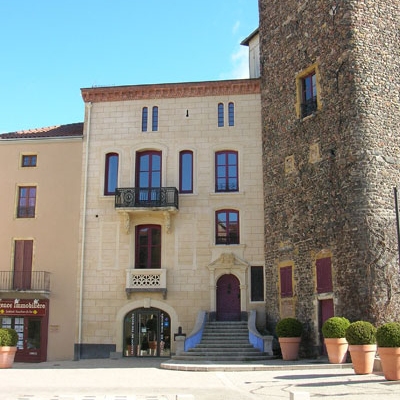
Like us on Facebook
PLACE NAMES



|
|
Roanne
|

| |
Roanne is a commune in the Loire department in central France.
It is located 90 km (56 mi) northwest of Lyon on the Loire River. It has an important Museum, the Musée de Beaux-arts et d'Archéologie Joseph Déchelette (French), with many Egyptian artifacts.
Roanne is known for gastronomy (largely because of the famous Troisgros family), textiles, agriculture and manufacturing tanks.
The toponomy is Gaulish, Rod-Onna ("flowing water") which became Rodumna, then Rouhanne and Roanne. The town was sited at a strategic point, the head of navigation on the Loire, below its narrow gorges. As a trans-shipping point, its importance declined with the collapse of long-distance trade after the fourth century. In the twelfth century, the site passed to the comte du Forez, under whose care it began to recover. An overland route led to Lyon and the Rhône, thus Roanne developed as a transshipping point between Paris and the Mediterranean in early modern France, when waterways were at least as important as roads.
The renewed navigation on the Loire encouraged the export of local products— wines, including casks of Beaujolais that had been shipped overland, ceramics, textiles—and after 1785, coal from Saint-Étienne, which had formerly been onloaded upstream at Saint-Rambert, since river improvements at the beginning of the century. Sturdy goods were rafted downriver on sapinières that were dismantled after use. Half the population of seventeenth and eighteenth-century Roanne depended in some way on this transportation economy: merchants and factors, carriers, carpenters and coopers, master-boatmen and their journeymen and oarsmen, and waterfront laborers.
Roanne was one of the first towns served by railroad, with the opening, 15 March 1833, of the terminal on the right bank at the port of Varennes of the third line, from Andrézieux. Following came the opening of the canal from Roanne to Digoin (1838), which placed the city in the forefront of the French Industrial Revolution.
In 1917 the arsenal was established at Roanne, and from 1940 a new industry developed, producing rayon and other new fibers. In the post-industrial phase that set in during the 1970s, Roanne struggled to find new industry and attract tourism.
 Feel free to Email me any additions or corrections Feel free to Email me any additions or corrections
LINKS AVAILABLE TO YOUR SITE
| | |





